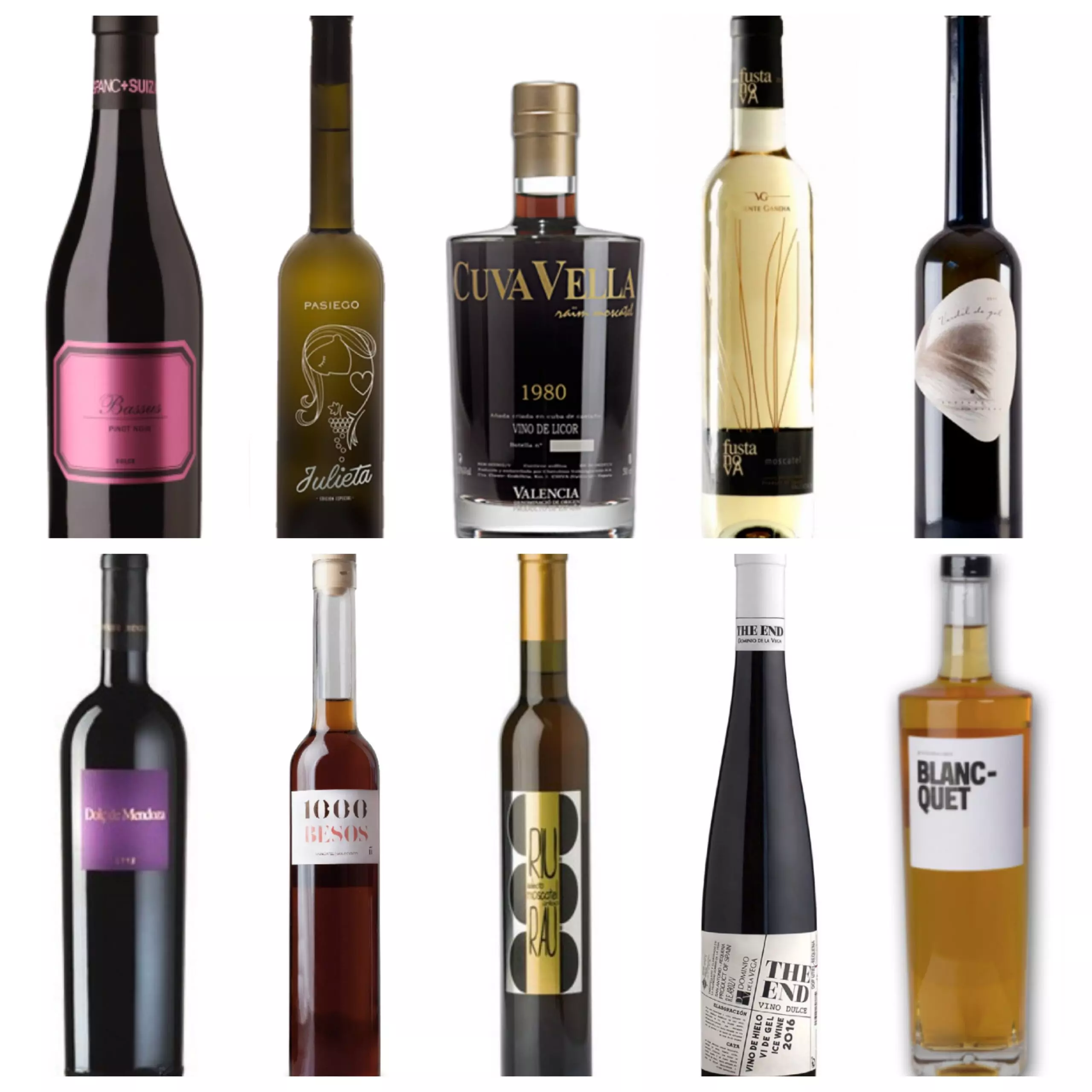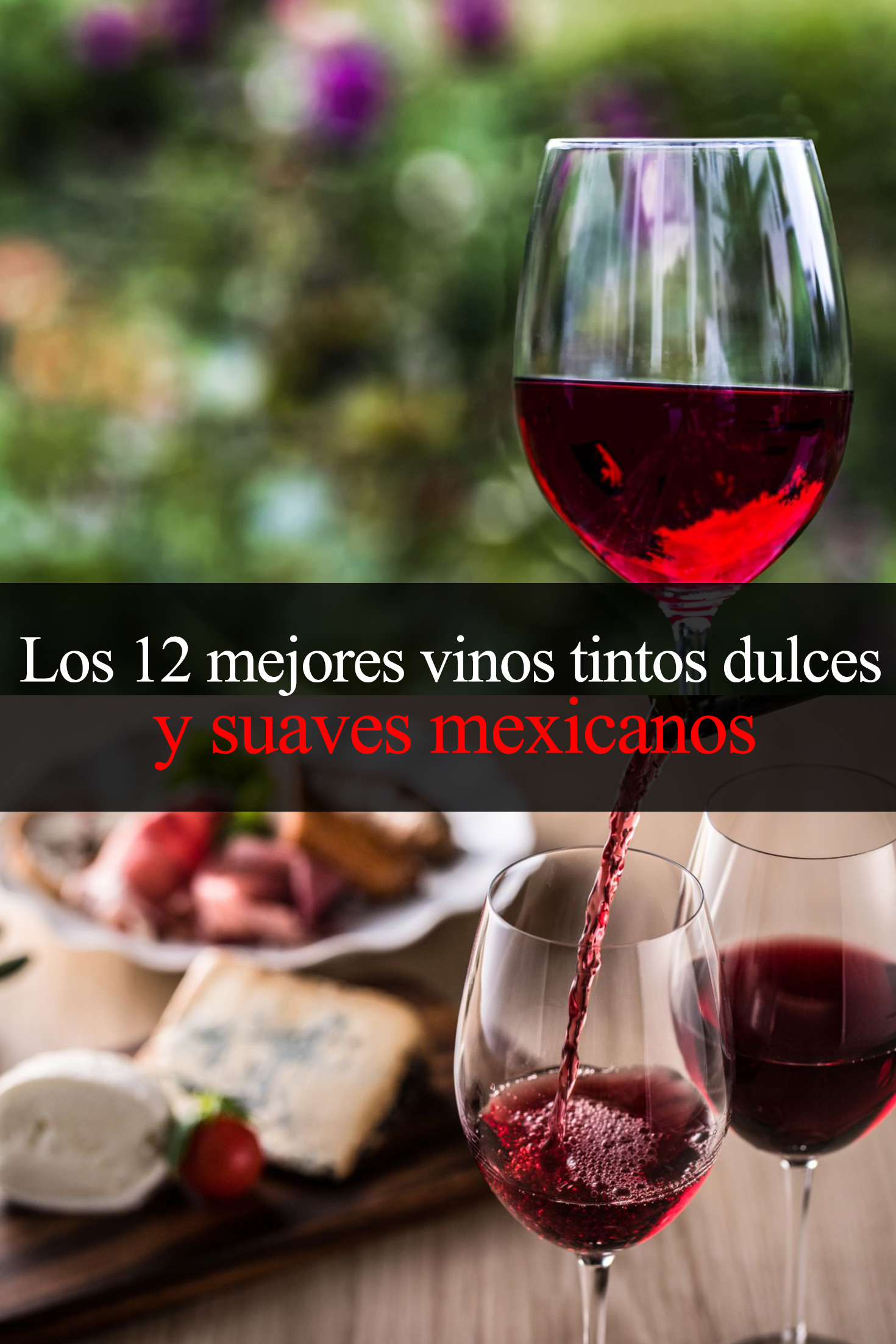Unveiling Sweet Wines: A Century Of Flavor & Joy
The world of wine is vast and varied, offering a spectrum of tastes and experiences for every palate. Among its most enchanting categories are vinos dulces, or sweet wines. Often misunderstood or relegated solely to dessert, these exquisite elixirs boast a rich history, complex production methods, and an incredible versatility that extends far beyond the final course. From the sun-drenched vineyards of Spain, where for a century, the most famous wine region has stood for wines that tell stories, to the frost-kissed vines of colder climates, sweet wines represent a pinnacle of winemaking artistry.
Embark on a journey with us to explore the captivating universe of sweet wines. We'll delve into their origins, the unique techniques that give them their distinctive character, and how to best enjoy them. Prepare to discover why these liquid treasures, full of taste, conviviality, and pure enjoyment, deserve a prominent place in your wine cellar and on your table.
Table of Contents
- What Are Vinos Dulces? Defining Sweet Wines
- A Journey Through History: The Enduring Appeal of Sweet Wines
- The Art of Sweet Wine Production: How They're Made
- Spain's Sweet Legacy: A Region of Storytelling Wines
- Pairing Perfection: Matching Vinos Dulces with Food
- Exploring Global Sweet Wine Varieties: A World of Taste
- Collecting and Storing Vinos Dulces: Preserving Their Magic
- Responsible Enjoyment and The Digital Journey
What Are Vinos Dulces? Defining Sweet Wines
At its core, a sweet wine, or vino dulce, is any wine with a noticeable amount of residual sugar after fermentation. Unlike dry wines, where yeast converts almost all grape sugars into alcohol, sweet wines retain some of that natural sweetness, resulting in a richer, often more viscous texture and a delightful palate. The level of sweetness can vary dramatically, from slightly off-dry to intensely luscious and syrupy. This residual sugar is not simply added; it is a natural component of the grapes, preserved through various winemaking techniques.
The balance in sweet wines is crucial. A truly great sweet wine is not just sugary; it possesses a vibrant acidity that cuts through the sweetness, preventing it from being cloying and instead creating a harmonious, refreshing, and often complex profile. This interplay of sweetness and acidity is what makes sweet wines so captivating and food-friendly. Without sufficient acidity, a sweet wine can taste flat and one-dimensional.
The Spectrum of Sweetness: From Off-Dry to Luscious
Understanding the spectrum of sweetness in wines is key to appreciating vinos dulces.
- Off-Dry: These wines have a hint of sweetness, often barely perceptible, but enough to soften the acidity and enhance fruit flavors. Think of some Rieslings or Gewürztraminers.
- Medium-Sweet: A more noticeable sweetness, but still balanced by good acidity. Many German Kabinett or Spätlese Rieslings fall into this category.
- Sweet: Clearly sweet, with significant residual sugar, but still fresh and vibrant. Sauternes, Tokaji, and many late-harvest wines are examples.
- Very Sweet/Luscious: These are the intensely sweet, often viscous wines, typically enjoyed in small quantities. Ice wines and Pedro Ximénez Sherry are prime examples, offering concentrated flavors and a luxurious mouthfeel.
The perception of sweetness is also influenced by other factors like acidity, tannin, and alcohol content. A wine with high acidity might taste less sweet than one with lower acidity, even if they have the same sugar levels. This complexity is part of the allure of vinos dulces.
A Journey Through History: The Enduring Appeal of Sweet Wines
Sweet wines are not a modern invention; their history is as old as winemaking itself. In ancient times, before precise fermentation control, many wines were naturally sweeter, as it was challenging to ferment all the sugar out. The Romans and Greeks highly prized sweet wines, often adding honey or spices to enhance their sweetness and preserve them. These early sweet wines were seen as elixirs, often consumed for medicinal purposes or as a sign of wealth and status.
The Middle Ages saw the continued popularity of sweet wines, particularly in monastic communities where winemaking techniques were refined. The accidental discovery of noble rot (Botrytis cinerea) in regions like Tokaj in Hungary and Sauternes in Bordeaux revolutionized sweet wine production, leading to wines of unparalleled complexity and longevity. These wines became highly sought after by royalty and aristocracy across Europe.
Fast forward to today, and the appeal of vinos dulces endures. They represent not just a beverage, but a tradition, a celebration, and a moment of pure indulgence. Indeed, it's been a century full of taste, conviviality, and enjoyment that these wines have brought to tables worldwide. They are wines that invite contemplation, perfect for savoring slowly, allowing their intricate layers of flavor to unfold. Their enduring presence in wine culture is a testament to their unique charm and the masterful craftsmanship involved in their creation.
The Art of Sweet Wine Production: How They're Made
Creating vinos dulces is a delicate and often labor-intensive process, relying on specific conditions and meticulous attention to detail. Unlike dry wines, where the goal is to ferment most of the sugar, sweet wine production aims to concentrate sugars in the grapes or stop fermentation before all sugars are converted. This can be achieved through several fascinating methods, each imparting a distinct character to the final wine.
The primary challenge is to achieve a high sugar concentration in the grapes while maintaining sufficient acidity. Grapes for sweet wines are often left on the vine longer than those for dry wines, allowing them to ripen further and accumulate more sugar. This "late harvest" method is a fundamental technique, but others involve manipulating the grapes or the fermentation process itself.
Noble Rot, Ice Wine, and More: Unique Methods
Here are some of the most prominent methods used to produce exquisite sweet wines:
- Noble Rot (Botrytis Cinerea): This benevolent fungus shrivels the grapes, concentrating their sugars, acids, and flavors while adding unique notes of honey, ginger, and saffron. Famous examples include Sauternes from Bordeaux, Tokaji Aszú from Hungary, and Beerenauslese/Trockenbeerenauslese from Germany and Austria. This method requires specific climatic conditions – morning mists followed by sunny afternoons – making these wines rare and prized.
- Ice Wine (Eiswein/Icewine): Grapes are left on the vine until they freeze solid, typically at -8°C (17°F) or colder. They are then pressed while frozen, separating the ice crystals (water) from the concentrated, sugary juice. This results in intensely sweet wines with piercing acidity, often showing flavors of apricot, honey, and citrus. Germany, Austria, and Canada are leading producers.
- Passito/Straw Wine (Vin de Paille): Grapes are harvested and then dried, traditionally on straw mats, for several weeks or months. This dehydration process concentrates the sugars and flavors. Examples include Italy's Vin Santo, Recioto, and France's Vin de Paille.
- Fortification: Alcohol (usually brandy) is added to the fermenting must, killing the yeast and stopping fermentation, thus preserving residual sugar. Port, Sherry (like Pedro Ximénez), and Madeira are classic fortified sweet wines, each with its own unique aging process.
- Late Harvest: Grapes are simply left on the vine longer than usual, allowing them to accumulate more sugar and sometimes develop a slight raisin character. Many regions produce late harvest Rieslings, Gewürztraminers, or Zinfandels.
Each method yields a distinct style of sweet wine, offering a diverse palette of aromas, flavors, and textures for the discerning enthusiast.
Spain's Sweet Legacy: A Region of Storytelling Wines
Spain, a country renowned for its vibrant wine culture, also boasts a rich and ancient tradition of producing exquisite vinos dulces. While often overshadowed by its dry red and white wines, Spanish sweet wines are treasures waiting to be discovered, offering a unique expression of the country's diverse terroirs and indigenous grape varieties.
From the fortified Sherries of Andalusia to the luscious Moscatels of Valencia and the sweet Garnachas of Priorat, Spain's sweet wine landscape is as varied as its geography. These wines are not merely beverages; they are liquid narratives, embodying centuries of winemaking heritage, the warmth of the Spanish sun, and the passion of generations of vintners. Indeed, it is said that for 100 years, Spain's most famous wine region has stood for wines that tell stories, and this is particularly true for its sweet offerings.
Key Spanish sweet wine styles include:
- Pedro Ximénez (PX) Sherry: From Jerez, this is perhaps Spain's most famous sweet wine. Grapes are sun-dried into raisins before fermentation, then fortified and aged in a solera system. The result is an intensely dark, viscous wine with notes of fig, raisin, coffee, and molasses.
- Moscatel: Made from Muscat grapes, these wines are aromatic and sweet, often with floral and citrus notes. Regions like Valencia, Málaga, and Navarra produce excellent examples, ranging from light, effervescent versions to richer, fortified styles.
- Malaga: Historic sweet wines from the Málaga region in Andalusia, made from Moscatel and Pedro Ximénez grapes, often aged oxidatively. They can range from pale and delicate to dark and intensely sweet.
- Garnacha Dulce: Found in regions like Priorat and Empordà, these are sweet wines made from the Garnacha (Grenache) grape, often fortified and showing rich red fruit, spice, and sometimes chocolate notes.
- Mistela: A type of sweet wine where grape must is fortified before fermentation begins, resulting in a sweet, unfermented grape juice with alcohol.
These vinos dulces from Spain are a testament to the country's winemaking prowess and its ability to craft wines that are both deeply traditional and incredibly appealing to modern palates.
Pairing Perfection: Matching Vinos Dulces with Food
One of the greatest joys of vinos dulces is their incredible versatility when it comes to food pairing. While often stereotyped as "dessert wines," their potential extends far beyond the sweet course. The key to successful pairing lies in understanding the wine's sweetness level, acidity, and flavor profile, and matching it with complementary or contrasting elements in the food.
The general rule of thumb is that the wine should be at least as sweet as the food, if not sweeter. If the food is sweeter, the wine can taste sour or thin. However, acidity in the wine is equally important, as it cleanses the palate and prevents the pairing from becoming cloying.
Beyond Dessert: Savory Pairings and Culinary Versatility
Let's explore some classic and surprising pairings for various sweet wine styles:
- Noble Rot Wines (Sauternes, Tokaji, Beerenauslese): These are quintessential pairings for foie gras, blue cheeses (like Roquefort or Gorgonzola), and rich fruit tarts (apricot, peach). Their honeyed complexity and vibrant acidity cut through the richness of these foods beautifully.
- Ice Wine: With its intense sweetness and high acidity, Ice Wine shines with fruit-based desserts (especially those with tropical fruits or berries), crème brûlée, or even a simple scoop of vanilla bean ice cream. It also makes a surprisingly good match for spicy Asian cuisine, where its sweetness can temper the heat.
- Pedro Ximénez Sherry: This luscious Spanish gem is divine poured over vanilla ice cream or dark chocolate cake. It also pairs wonderfully with strong, aged cheeses, or even as a unique glaze for roasted meats.
- Late Harvest Riesling/Gewürztraminer: These lighter sweet wines are excellent with lighter desserts like fruit salads, apple pie, or lemon meringue. They can also complement mildly spicy dishes or lighter cheeses.
- Port (Ruby, Tawny): Ruby Port is a classic with chocolate desserts, berry tarts, and blue cheese. Tawny Port, with its nutty, oxidative notes, pairs beautifully with nutty desserts, caramel, and hard cheeses like cheddar or Gouda.
Don't be afraid to experiment! The world of sweet wine pairings is vast and offers endless opportunities for culinary discovery. A well-chosen vino dulce can elevate a meal from good to unforgettable.
Exploring Global Sweet Wine Varieties: A World of Taste
Beyond the well-known regions and methods, the world offers a fascinating array of vinos dulces, each reflecting its unique terroir and winemaking traditions. Expanding your palate to include these global treasures can be a deeply rewarding experience.
- Vin Santo (Italy): Literally "Holy Wine," this Tuscan specialty is made from dried grapes (usually Trebbiano and Malvasia) and aged oxidatively in small barrels for many years. It's often enjoyed with cantucci (almond biscuits) for dipping.
- Recioto (Italy): From Veneto, Recioto is made from partially dried grapes, often Corvina, Rondinella, and Molinara (for Recioto della Valpolicella) or Garganega (for Recioto di Soave). It's a rich, often chocolatey red sweet wine or a golden, honeyed white.
- Madeira (Portugal): A fortified wine from the island of Madeira, known for its incredible longevity and unique "estufagem" (heating) process. Styles range from dry to intensely sweet (Malmsey/Malvasia and Bual are the sweetest), offering notes of caramel, nuts, and dried fruit.
- Tokaji (Hungary): One of the world's oldest noble rot wines, Tokaji Aszú is made from grapes affected by Botrytis. Its sweetness level is indicated by "Puttonyos" (3 to 6), with Eszencia being the rarest and most concentrated. Flavors include apricot, honey, and spice.
- Vins Doux Naturels (France): These "naturally sweet wines" are fortified during fermentation. Famous examples include Muscat de Beaumes de Venise, Muscat de Rivesaltes, and Banyuls, often showing intense fruit, floral, or oxidative notes.
- Samos (Greece): From the island of Samos, these sweet wines are made from the Muscat grape, often sun-dried. They are aromatic, with notes of orange blossom, honey, and dried fruit.
Each of these sweet wines offers a distinct sensory journey, showcasing the incredible diversity and artistry within this category. Exploring them is not just about tasting wine; it's about experiencing the history, culture, and unique natural conditions of their origins.
Collecting and Storing Vinos Dulces: Preserving Their Magic
Many vinos dulces are renowned for their exceptional aging potential, often outliving their dry counterparts. Wines made with noble rot, ice wines, and fortified sweet wines can evolve beautifully over decades, even a century, developing incredible complexity and depth. This makes them fascinating subjects for collectors and a rewarding investment for those with patience.
Proper storage is paramount to preserving the quality and ensuring the graceful aging of your sweet wines. The principles are similar to storing any fine wine, but with an emphasis on consistency and protection from environmental fluctuations.
- Temperature: Store sweet wines at a consistent cool temperature, ideally between 12-15°C (54-59°F). Fluctuations in temperature can cause the wine to expand and contract, pushing the cork out or allowing oxygen in, leading to premature aging or spoilage.
- Humidity: Maintain a humidity level of around 70%. Too dry, and corks can shrink, letting air in. Too humid, and labels can peel, and mold can grow.
- Light: Keep wines away from direct sunlight and artificial light, which can degrade the wine and cause "light strike." Dark, cool environments like a cellar or wine fridge are ideal.
- Vibration: Minimize vibrations, as they can disturb the wine's natural aging process and prevent sediment from settling.
- Bottle Position: For wines with natural corks, store bottles horizontally to keep the cork moist and prevent it from drying out and allowing air ingress. Screw-cap or glass-stoppered bottles can be stored upright.
When stored correctly, your collection of vinos dulces will not only retain its quality but will likely improve, offering an even more profound and rewarding experience when finally opened. Investing in a good wine storage solution is a small price to pay for the long-term enjoyment of these liquid masterpieces.
Responsible Enjoyment and The Digital Journey
As with all alcoholic beverages, enjoying vinos dulces should always be done responsibly and in moderation. While their sweetness might make them seem innocuous, they often have similar or even higher alcohol content than dry wines, especially fortified styles. Understanding the sugar content is also important for those monitoring their dietary intake. Sweet wines are best savored in smaller portions, allowing their rich flavors to be fully appreciated without overconsumption.
In today's interconnected world, the journey of discovering and learning about sweet wines often begins online. From detailed articles to virtual tastings and online retailers, the internet provides an invaluable resource for enthusiasts. As you embark on your journey to discover the world of sweet wines, a well-functioning online resource is invaluable. This includes cookies, which are necessary for the proper functioning of the website, as well as ensuring a smooth and informative browsing experience as you explore the nuances of vinos dulces. Reliable online platforms provide access to a wealth of information, from historical facts and production methods to tasting notes and pairing suggestions, making the exploration of these exquisite wines more accessible than ever before.
Conclusion
The world of vinos dulces is a captivating realm of flavor, history, and craftsmanship. From the ancient traditions of noble rot wines to the modern marvels of ice wine, these sweet elixirs offer a diverse and rewarding experience for any wine lover. We've explored their definitions, the intricate methods of their creation, their storied past, and their remarkable versatility in food pairings, especially those unexpected savory matches. Spain's contribution to this category, with its storytelling wines, stands as a testament to the global appeal and enduring legacy of these delightful beverages.
Whether you're a seasoned connoisseur or just beginning your wine journey, we encourage you to explore the rich tapestry of sweet wines. Don't let preconceived notions limit your palate; instead, embrace the complexity, the balance, and the sheer joy that a well-crafted vino dulce can bring. Share your favorite sweet wine experiences in the comments below, or perhaps tell us about a surprising pairing you've discovered. For more insights into the fascinating world of wine, be sure to explore other articles on our site. Cheers to sweet discoveries!

Los 6 tipos de vinos tintos dulces que debes probar - Tips Para Tu Viaje

Vinos dulces ¡Una delicia! - ¡Que no puedes dejar de probar!

Los 12 mejores vinos tintos dulces y suaves mexicanos que debes probar